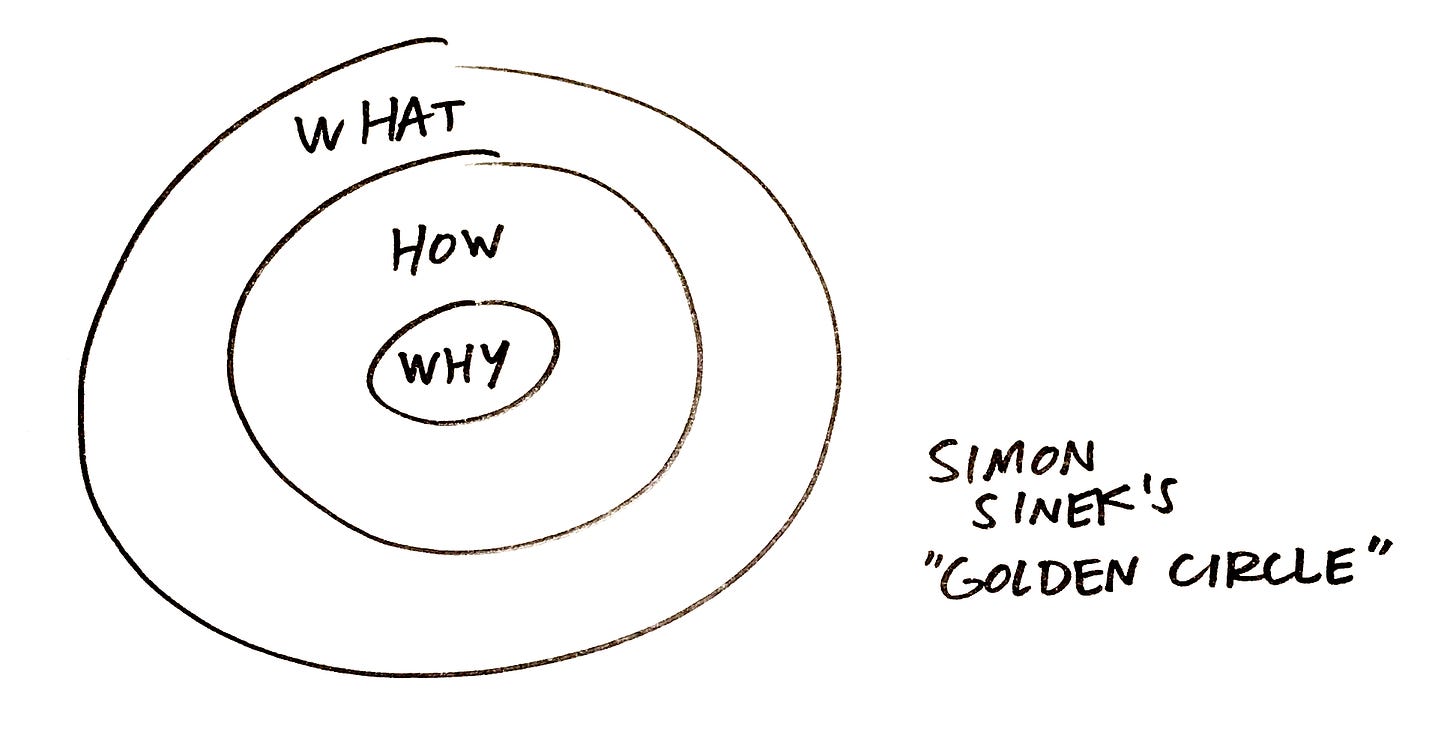How a Brand Sprint Led to Something Unexpected
FTF15
I want to launch a productivity brand. I even have a name, Ommoso. But I got stuck thinking about who my target customers are. Then I realized I don’t know who Ommoso is. Brands have personalities. Tesla is rebellious. Rolex is sophisticated. Jeep is rugged. Ommoso is... While struggling for an answer, my mind pulled up a medium article I read years ago on how to run a brand workshop.
If you are just joining us, welcome to the FollowTheFox skulk. At FollowTheFox I’m revealing my process for launching 4 products online over the next 12 months. With one product already released, I have three to go. These newsletters will give you the behind-the-scenes details to feed your curiosity and give you the steps to launch your products. To start at the beginning of the journey go here or skip right to the 2020 highlights here.
Actually, to tell the whole story, that wasn’t the first thing that popped into my head. First, I Googled “branding” (or something like that) and skimmed clickbaity articles which got me nowhere. Then, taking time to lean back, metaphorically and physically, Jake Knapp’s medium article popped in my head.
Jake Knapp, author of Sprint and Make Time developed a three-hour brand sprint. While at Google Ventures, Knapp popularized the Design Sprint, which is a 5-day workshop to help teams solve product and marketing challenges. In his three-hour brand sprint, he put together exercises in a sprint-like process to help teams define their brand. This was exactly what I needed, a process for coming up with my brand’s identity.
The workshop has six exercises that help teams think about their brand’s motivations and its relationship to other brands in the landscape. The exercises are as follows:
20-Year Roadmap helps you think long-term.
What, How, Why reminds you why your company exists.
Top 3 Values makes your why more specific.
Top 3 Audiences help you prioritize the target for your brand.
Personality Sliders define the attitude and style of your brand.
Competitive Landscape compares your brand to other companies.
You can read more about each exercise here.
With this guide in hand, workshop supplies, and an open mind I went about defining the brand for Ommoso. At the end of my brand sprint, I created a quick presentation that sums up my results for each exercise. Having an example of what these results might look like would be helpful for anyone who’s thinking about doing this workshop for their brand. So I’ve decided to share my workshop results with you here.
I won’t walk through each exercise but I’ll highlight the exercise I think was the most enlightening: What, How, Why
The What, How, Why exercise is based on Simon Sinek’s “Golden Circle,” which he introduces in this Ted Talk. The idea is that when most companies talk about themselves they start with what they do (the outermost circle), followed sometimes by how they do it (the middle circle), but rarely do they talk about why (the innermost circle) they do it. Sinek gives comparisons of how a good company communicates and how great companies do it.
Good companies only talk about what they are selling and how they’ve made it., e.g., “Here’s our new car. We built it with great gas mileage, leather seating, all-wheel drive, etc... Do you want to buy one?” Great companies, think Apple, Nike, Tesla, etc., communicate starting with their why. Here’s how Apple does it: “In everything we do, we believe in challenging the status quo, we believe in thinking differently. The way we challenge the status quo is by making our products beautifully designed, simple to use, and user friendly. We just happen to make great computers. Want to buy one?” Big difference right? When you start with why you attract customers who believe in what you believe. Sinek goes into more detail about why this is true in his talk. Check it out for more info.
While I was doing the What, How, Why exercise, I’ll admit, I don’t think my why was as inspiring as Apple. What resonated the most from what I came up with was “everyone is capable of anything.” I do believe this to be true, but something was missing. During the workshop, I had little time to refine this, since I gave myself 3 hours. So I moved on to the next exercises to get through the sprint.
When I was preparing to write this newsletter, I needed something to sum up what I discovered about Ommoso during the brand sprint. I could have listed the results of each exercise, but then I’d just be reiterating the presentation of the results. There had to be a more concise way to sum up the sprint. I re-watched Sinek’s Ted Talk, and I discovered what was missing. I needed a mission statement. When he gave the example of how Apple communicates, he was describing Apple’s mission. A company’s mission is their reason for existing, it’s their why. I’ve always known this but now I get it. I’ve tried to write mission statements in the past but I always thought about it as “marketing speak” to get customers to buy products and that’s how all my previous attempts sound. Now I know a mission statement is meant to motivate employees and owners (who believe in the mission) to do their best work. When I tried to think of a mission for Ommoso, it was easy for me to come up with something I am inspired by:
We believe self-mastery—in harmony with nature—leads to a fulfilled life. Through research and experimentation, we develop and discover products that give aid to self-mastery.
Ommoso’s mission is to give aid to those on the journey to self-mastery.
When I started this journey to define Ommoso’s brand I didn’t know that I’d end up with a mission statement too. Now I can align all my future decisions and actions for Ommoso to its brand identity and be motivated by a powerful mission.
What’s your company’s mission? Is it inspiring? Do you believe in it?
--
If you’re reading this in your inbox, feel free to forward it to someone who may be creating their brand and perhaps in the process of creating a mission statement.
Next week the plan is to do some user research. Coincidentally that was the plan for this week too. One of my favorite quotes about plans is, “Plans are useless, but planning everything.” With that said, maybe next week I’ll do better at sticking to the plan or not. Either way, I’ll see you then.


